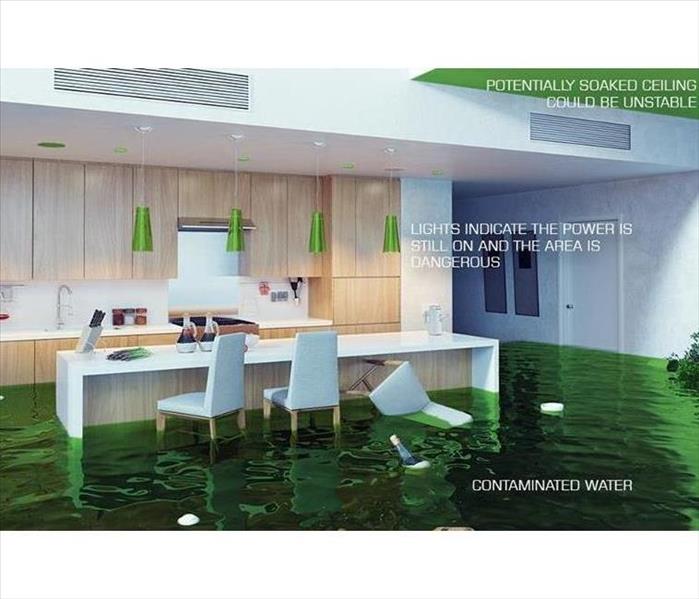What are Water Categories?
6/6/2022 (Permalink)
As the professionals in water damage restoration, one of the first important steps in assisting our customers is identifying the water category. Essentially, identifying the water category is finding out the source of the water and its range of contamination. Other factors such as time, temperature, undesired substances, and location can affect the amplification of contaminants, therefor affecting the category determination.
With modern day conveniences in every part of our homes, water can come from all sorts of places. Identifying the source of the water is crucial in determining what steps will need to be taken to properly restore your property.
Below, we will identify the three main categories of water and their possible sources
CATEGORY 1
This category of water mostly originates from a sanitary or clean water source.
Common examples of category 1 water can include, but are not limited to broken water supply lines, tub or sink overflows without contaminants, appliance supply lines, melting snow or ice, falling rainwater, and broken toilet tanks & bowls without contaminants.
If left untreated, with time, or when other unfavorable variables are introduced this category of water can deteriorate into a category 2 or 3.
CATEGORY 2
This category of water contains significant amounts of contamination.
Common examples of category 2 water can include but are not limited to overflows from washing machines (with detergents, soaps, or other chemical contaminants), overflows from toilet bowls with urine not feces, broken aquariums, broken water beds, and discharge from washing machines or dishwashers (with detergents, soaps, or other chemical contaminants).
CATEOGRY 3
This category of water is considered to be grossly contaminated. Usually, water placed within this category is of a dark color and may have a very strong odor to it.
Common examples of category 3 water can include, but are not limited to sewage, waste line backflows, forms of bodily fluids, all forms of seawater, river water, or streams. Category 3 water may also contain amounts of regulated or hazardous materials, fuels, lead, pesticides, and other possible toxic substances.
These categories are an important way for us to identify how we achieve a proper restoration by controlling the spread of contaminants, cleaning affected areas, removing highly damaged materials, and drying affected areas that are able to be effectively dried. Depending on the category determination and the reaction time to the loss, some of these steps may or may not be required, which can greatly affect how much a loss is going to cost a customer.
Although, SERVPRO professionals will always use their RESTORE VS. REPLACE approach with your property. Essentially, we will save as many materials through cleaning and drying as we possibly can before deciding to remove them, and the technicians will always discuss these motives with you before following through with these decisions.
In any water loss situation, it is important to correct the source of the water intrusion and call your SERVPRO professionals for further assistance. Our trained technicians hold specific certifications in water restoration distributed by the IICRC (Institute of Inspection Cleaning and Restoration Certification).
Our technicians will be able to answer any of the important questions, and properly address any concerns you may have throughout the process.
From small to large loss, and residential to commercial, SERVPRO of Buckeye & West Surprise/ Wickenburg has the experience, the training, and the supplies to get the job done right.



 24/7 Emergency Service
24/7 Emergency Service
